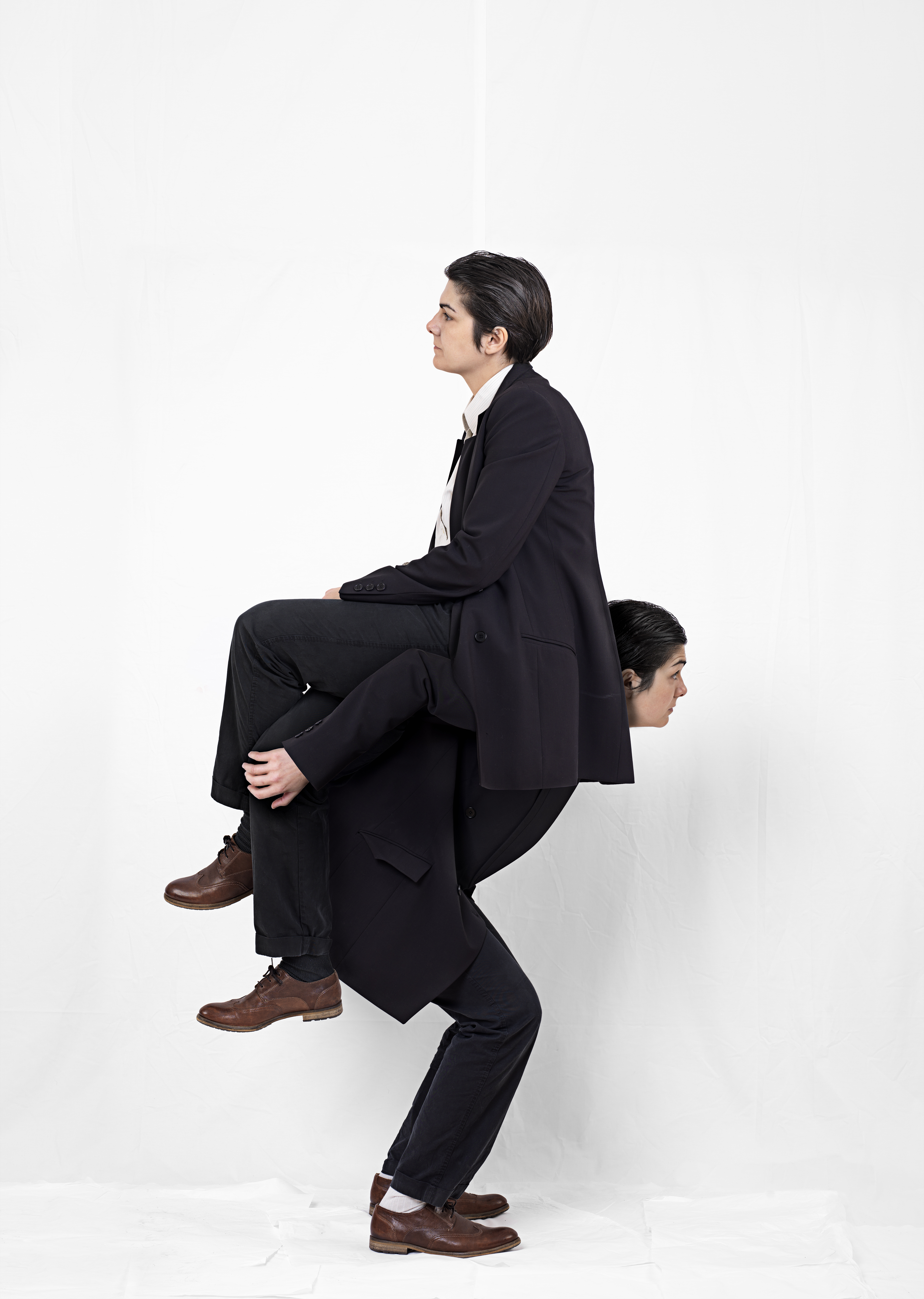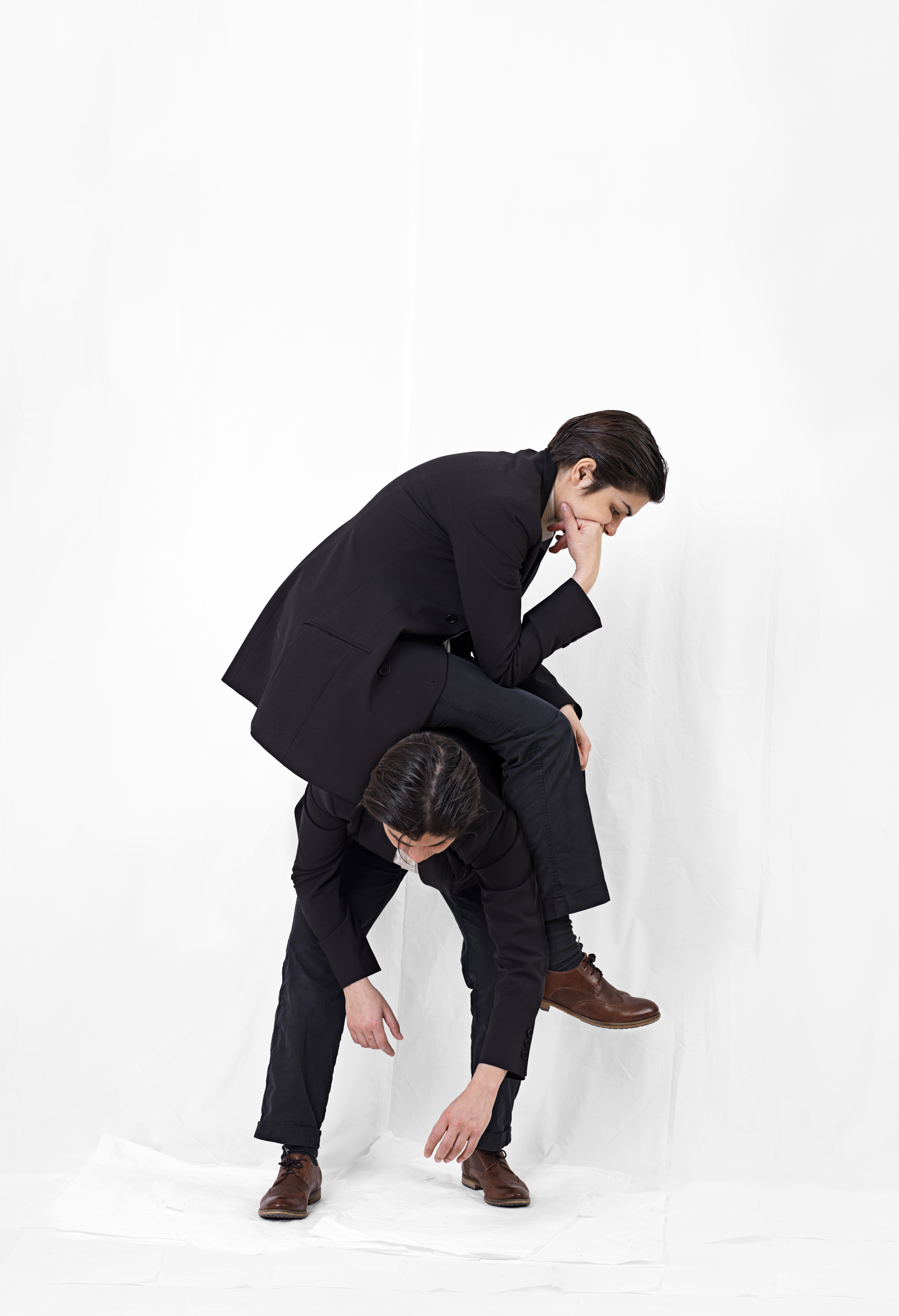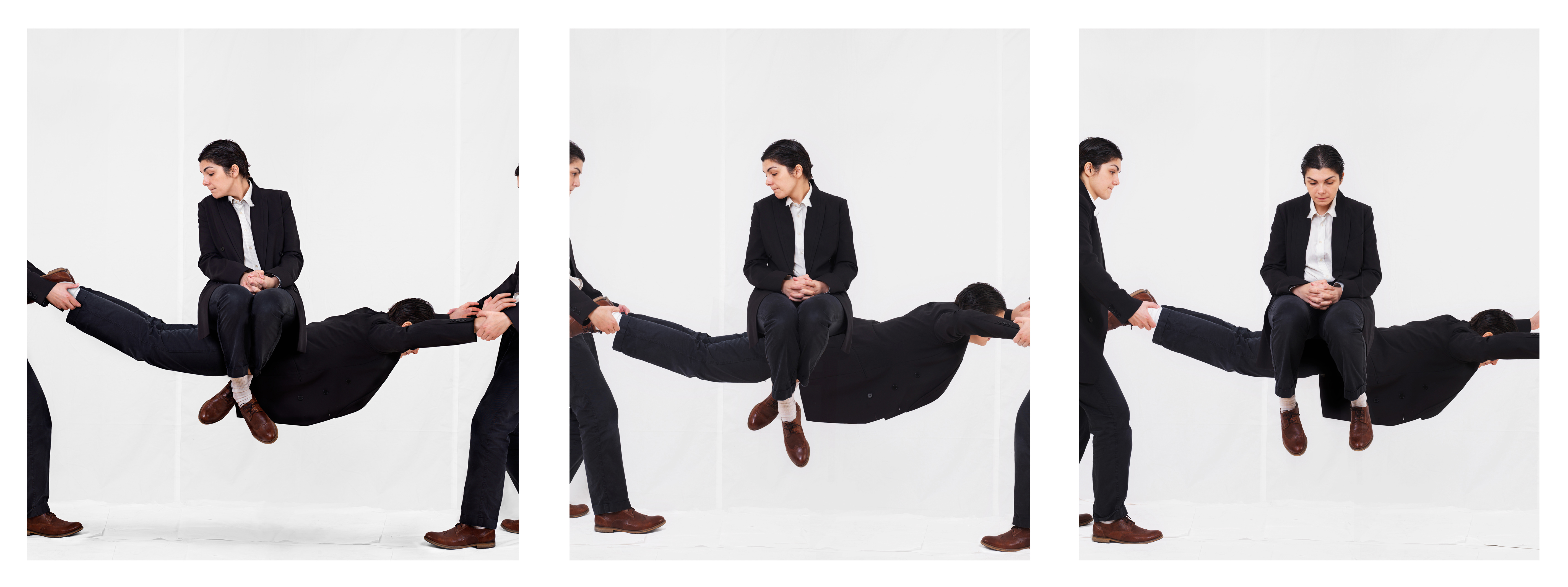
Rehearsal (Turmsprünge #08)
photographic print, 60x115cm (unframed)
photographic print, 60x115cm (unframed)

Rehearsal (Huckepack #01)
photographic print, 51x36cm (unframed)
photographic print, 51x36cm (unframed)

Rehearsal (Räuberleiter #07)
photographic print, 57x48cm (unframed)
photographic print, 57x48cm (unframed)

Rehearsal (Pony #06)
photographic print, 51x36cm (unframed)
photographic print, 51x36cm (unframed)

Rehearsal (Sackkarre #05)
photographic print, 60x60cm (unframed)
photographic print, 60x60cm (unframed)

Rehearsal (Schiffschaukel #03)
photographic print, 51x47cm (x3) (unframed)
photographic print, 51x47cm (x3) (unframed)
Rehearsal
by Keh Ng
The modern language experiment
“Life is a tragedy when seen in close-up, but a comedy in long-shot.” Charlie Chaplin
When viewing the “Rehearsal” pieces, the viewer is reminded of a bygone era of silent films and theatre. Actions that appear funny but somehow tragic are reminiscent of Charlie Chaplin’s quote “Life is a tragedy when seen in close-up, but a comedy in long-shot.” Chaplin, a master of gesture himself was always aware of the power of the body’s language. That like in any language, nuances are the key that can hold true meaning. The figures we see in the various configurations suggest a formal relationship. It is unclear whether they are performing to entertain or for duty as while the poses are impressive, ridiculous and impossible in equal measure, the expressions of the figures are sometimes pained, non-plussed but most often vacant allowing the viewer to constantly re-assess what exactly these figures are rehearsing.
Übersetzung
Text von Keh Ng
The modern language experiment
“Life is a tragedy when seen in close-up, but a comedy in long-shot.” Charlie Chaplin
Beim Betrachten der „Rehearsal“-Stücke wird der Betrachter an eine vergangene Ära des Stummfilms und des Theaters erinnert. Handlungen, die lustig, aber irgendwie tragisch wirken, erinnern an Charlie Chaplins Zitat „Das Leben ist eine Tragödie, wenn man es aus der Nähe betrachtet, aber eine Komödie aus der Distanz betrachtet.“ Chaplin, ein Meister der Gesten, war sich stets der Kraft der Körpersprache bewusst. Wie in jeder Sprache sind Nuancen der Schlüssel, der die wahre Bedeutung enthalten kann. Die Figuren, die wir in den verschiedenen Konfigurationen sehen, lassen auf eine formale Beziehung schließen. Es ist unklar, ob sie zur Unterhaltung auftreten oder sich im Dienst befinden, denn während die Posen gleichermaßen beeindruckend, lächerlich und unmöglich sind, sind die Gesichtsausdrücke der Figuren manchmal gequält, verblüfft, aber meistens ausdruckslos, was dem Betrachter eine ständige Neubewertung ermöglicht was genau diese Figuren proben.
by Tina Hage
The photo series titled Rehearsal draws on the physical comedy and visual storytelling of silent films, particularly the 1920s works of Buster Keaton. In this work, the layered composition and exaggerated body language of the two figures evoke a sense of slapstick humor.
The title Rehearsal refers to the preparation for an event that, in this case, will never happen—a moment of futility, akin to the myth of Sisyphus. The figures' poses emphasize this endeavor, where the goal becomes irrelevant. The repetitive actions, reminiscent of Keaton's carefully timed comedic routines, symbolise life's cyclical nature and the constant striving inherent in everyday tasks.
The reenacted poses, staged and photographed by myself, go beyond homage to silent film. They emphasise a contemporary context, offering a visual metaphor for the struggles of modern life. The figures, dressed in dark suits against a stark white backdrop, further heighten the sense of timelessness and universality. The simplicity of the setting strips away distractions, allowing the focus to remain on the movements, expressions, and tensions between the figures.
Through digital collages, the images reflect how modern existence is composed of repeated efforts, where the end goal often fades into irrelevance. This creates a playful connection between the physicality of early cinema and reflections on contemporary life.
Übersetzung
Text von Tina Hage
Die Fotocollage mit dem Titel Rehearsal greift die physische Komik und das visuelle Erzählen von Stummfilmen auf, insbesondere die Filme von Buster Keaton aus den 1920er Jahren. In diesem Bild rufen die konstruierte Komposition und die übertriebene Körpersprache der beiden Figuren ein Gefühl von Slapstick-Humor hervor.
Der Titel Rehearsal bezieht sich auf die Vorbereitung auf ein Ereignis, das in diesem Fall nie stattfinden wird—ein Moment der Sinnlosigkeit, ähnlich dem Mythos von Sisyphus. Die Posen der Figuren betonen dieses Bestreben, bei dem das Ziel irrelevant wird. Die sich wiederholenden Handlungen, die an Keatons sorgfältig getimte komödiantische Routinen erinnern, werden zum Symbol für den Kreislauf des Lebens und das ständige Bemühen im Alltag.
Die nachgestellten Posen, die von mir inszeniert und fotografiert wurden, gehen über eine Hommage an den Stummfilm hinaus. Sie betonen einen zeitgenössischen Kontext und bieten eine visuelle Metapher für die Herausforderungen des modernen Lebens. Die Figuren in dunklen Anzügen vor einem weißen Hintergrund verstärken das Gefühl von Zeitlosigkeit und Allgemeingültigkeit. Die Schlichtheit der Kulisse lenkt von Ablenkungen ab und ermöglicht es, den Fokus auf die Bewegungen, Ausdrücke und Spannungen zwischen den Figuren zu richten.
Durch digitale Collagen spiegeln die Bilder wider, wie das Leben aus wiederholten Aufgaben besteht, bei denen das Endziel oft an Bedeutung verliert. Dies schafft eine spielerische Verbindung zwischen der Körperlichkeit des frühen Kinos und Reflexionen über unser heutiges Dasein.